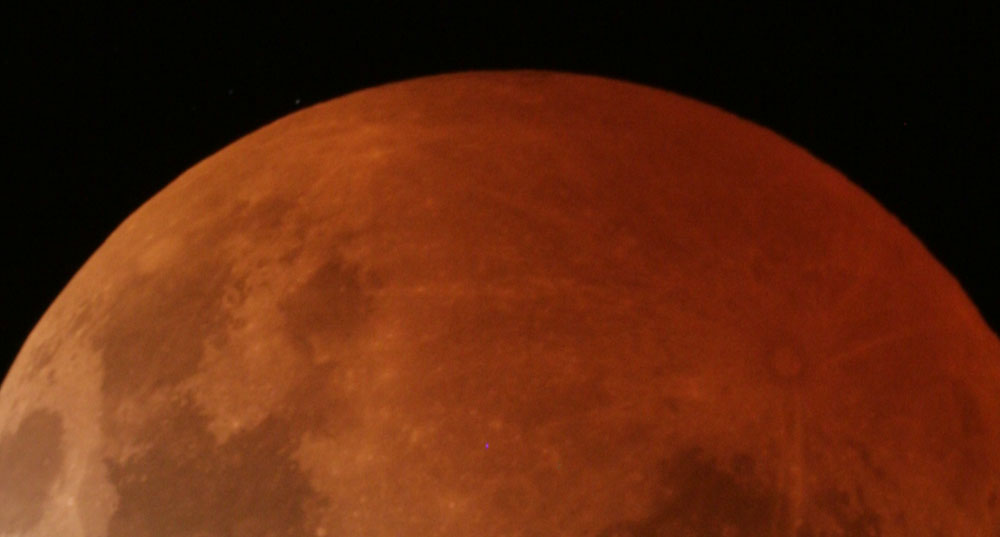Difference between revisions of "December 22, 2010"
| Line 12: | Line 12: | ||
21/12/2010, 08:20 GMT. Cannon EOS Digital Rebel XTI on AT8"N, 1 exposure of 3.2s, ISO400.<br /> | 21/12/2010, 08:20 GMT. Cannon EOS Digital Rebel XTI on AT8"N, 1 exposure of 3.2s, ISO400.<br /> | ||
<br /> | <br /> | ||
| + | <p><b>Yesterday's LPOD:</b> [[December 21, 2010|Lunar Field Atlas]] </p> | ||
| + | <p><b>Tomorrow's LPOD:</b> [[December 23, 2010|Loss of Light]] </p> | ||
<hr /> | <hr /> | ||
Revision as of 10:47, 7 February 2015
Solstice Red

image by Saúl Obregón, Santiago de Queretaro, Mexico, 20°N, 100°W
Despite the opinions of many news reports, lunar eclipses are not rare. Based on data at Fred Espenak's NASA Eclipse website, over 5000 years a lunar eclipse of some sort occurs 2.4 times each year, and a total one happens on average every 1.4 years. Lunar eclipses on any particular day presumably occur roughly every 365 eclipses, or for total eclipses (which account for just 29% of all eclipses), about every 1300 eclipses, or very roughly about every 543 years. So a total lunar eclipse on a solstice is uncommon, as is one on your birthday or any other random day. Some news stories seem to think a lunar eclipse at the time of a full Moon is special. The ignorance represented by such thinking needs to be eclipsed by the red glow of learning.
Chuck Wood
Technical Details
21/12/2010, 08:20 GMT. Cannon EOS Digital Rebel XTI on AT8"N, 1 exposure of 3.2s, ISO400.
Yesterday's LPOD: Lunar Field Atlas
Tomorrow's LPOD: Loss of Light



